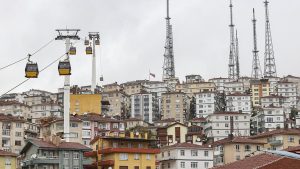The war between Ukraine and Russia has been ongoing for over two years, with the U.S. and its European allies providing defensive aid to Ukraine. However, Russia has recently made small advances, and Ukraine is facing the possibility that further aid from Washington may not be forthcoming. George Barros, a Russia analyst, stated that Ukraine is facing serious shortages of defense supplies and may not have what it needs to successfully defend itself. The Biden administration has pledged to continue supporting Kyiv, but without substantial assistance measures passed by Congress, Ukrainian soldiers are left to bear the burden on the front lines.
European allies, including France, have stepped up to provide aid to Ukraine, with France set to deliver 78 howitzers to meet Kyiv’s urgent needs. Despite Europe outspending the U.S. on defense support for Ukraine, it takes time for new factories and capabilities to become fully operational. Barros emphasized that the U.S. plays a strategic bridging role until European capacities are fully online. Ukraine’s air defenses have been depleted, with air defense missiles running critically low and the air force degraded after years of fighting with Soviet-era warplanes. Russia has also escalated attacks on critical infrastructure within Ukraine using advanced missiles sourced from Iran.
The Russian military has conducted intensive bombing campaigns against Ukrainian infrastructure, pushing Kyiv to choose between defending frontline positions or protecting critical infrastructure in major cities. Russia has adapted its tactics, improving the effectiveness and lethality of its military. If Russia gains uncontested air superiority, it could conduct carpet bombing campaigns similar to those in Syria. Barros warned that Ukraine will lose the war without continued support from the United States and that Russian forces could make significant gains in 2024 if critical resupply is not provided to Ukrainian forces.
Ukraine has managed to hold its positions on the front line for months, but experts agree that this is not sustainable in the long term. The lack of ammunition and air defenses, combined with Russia’s evolving military tactics, pose significant challenges for Ukraine. Barros highlighted the urgent need for continued support from the United States to prevent a catastrophic defeat for Ukraine. Ukraine and other European allies have warned that if Russia gains a foothold in Ukraine, it is unlikely to stop there. The situation remains dire, with Ukraine facing a formidable adversary and uncertain support from its Western allies.
















